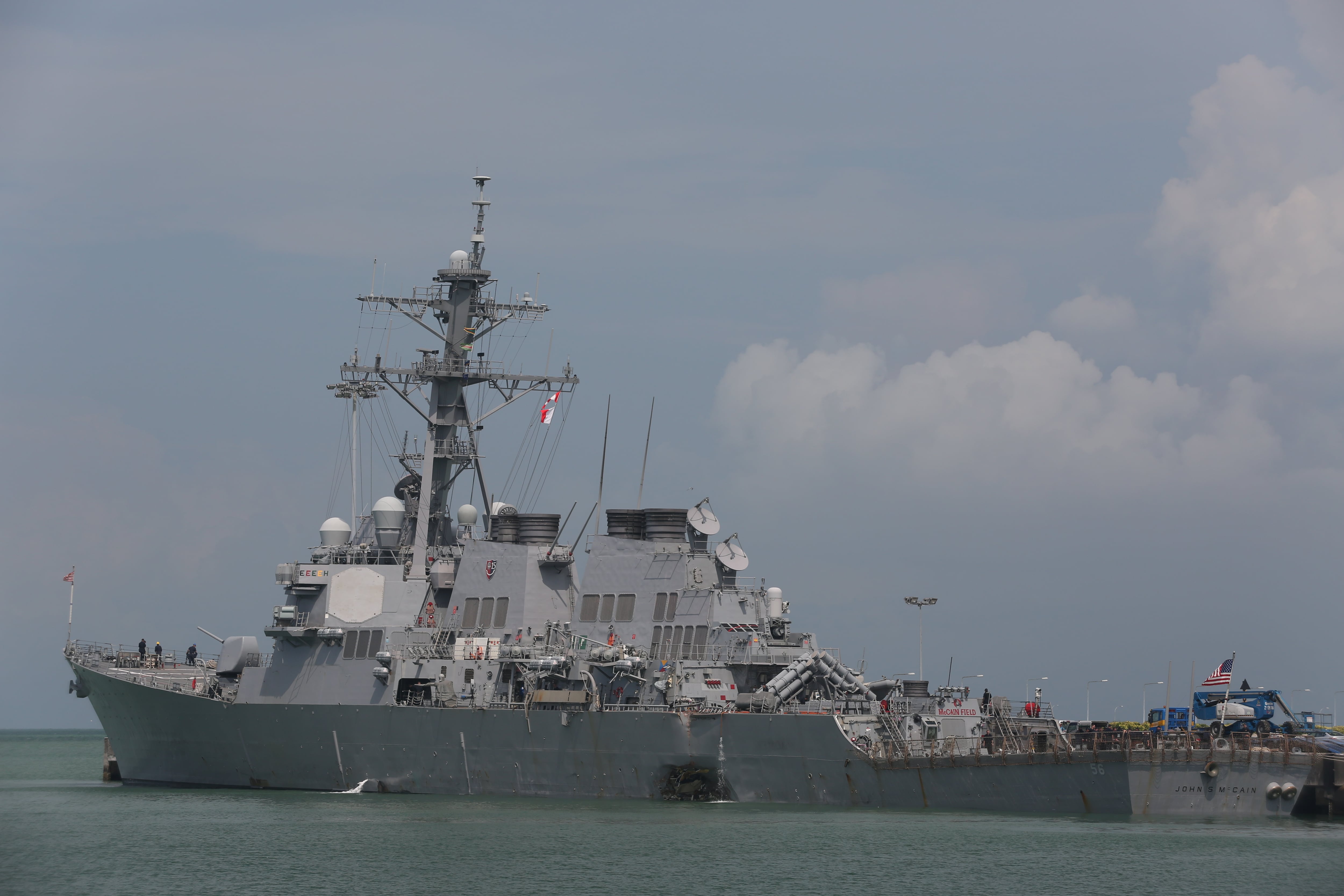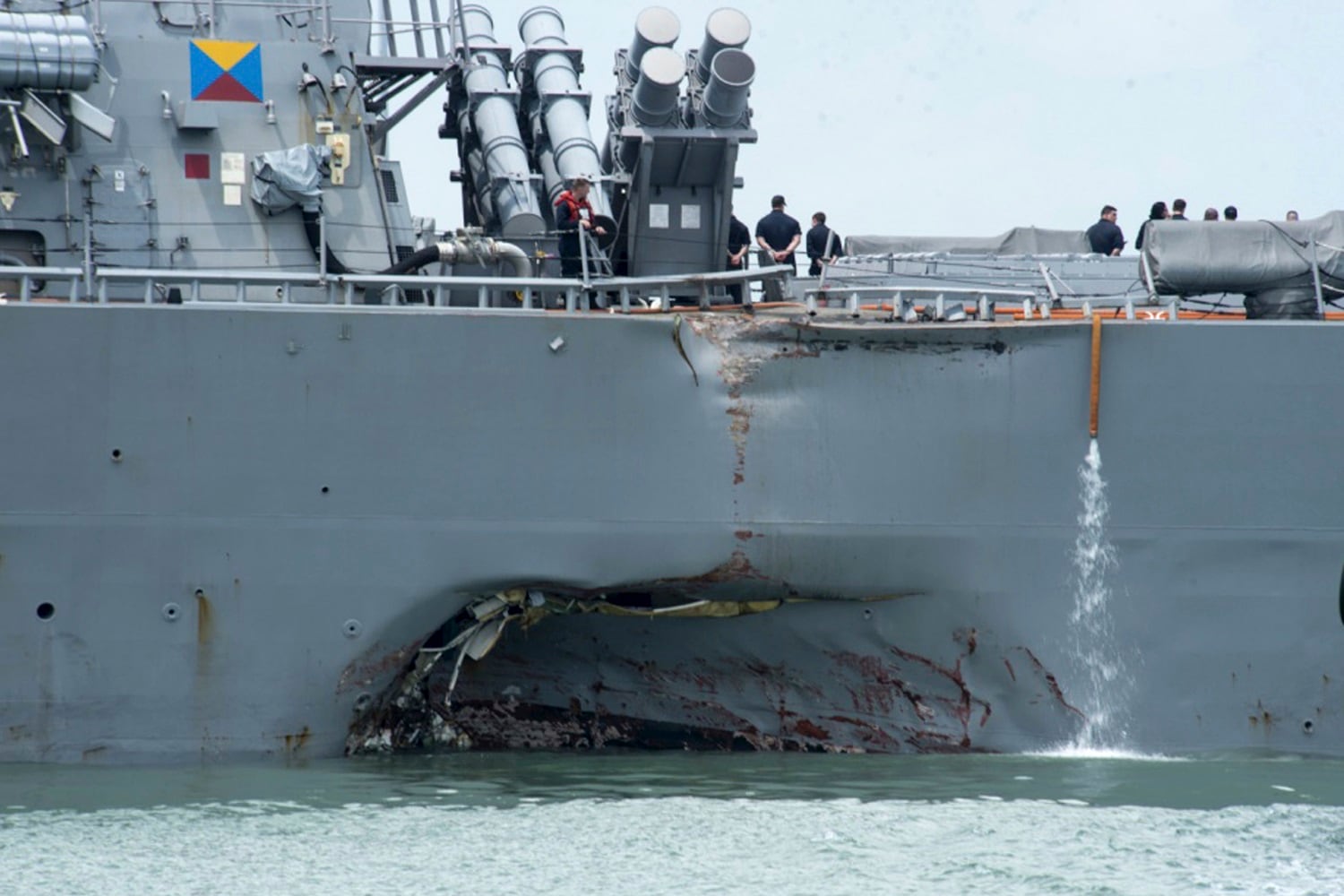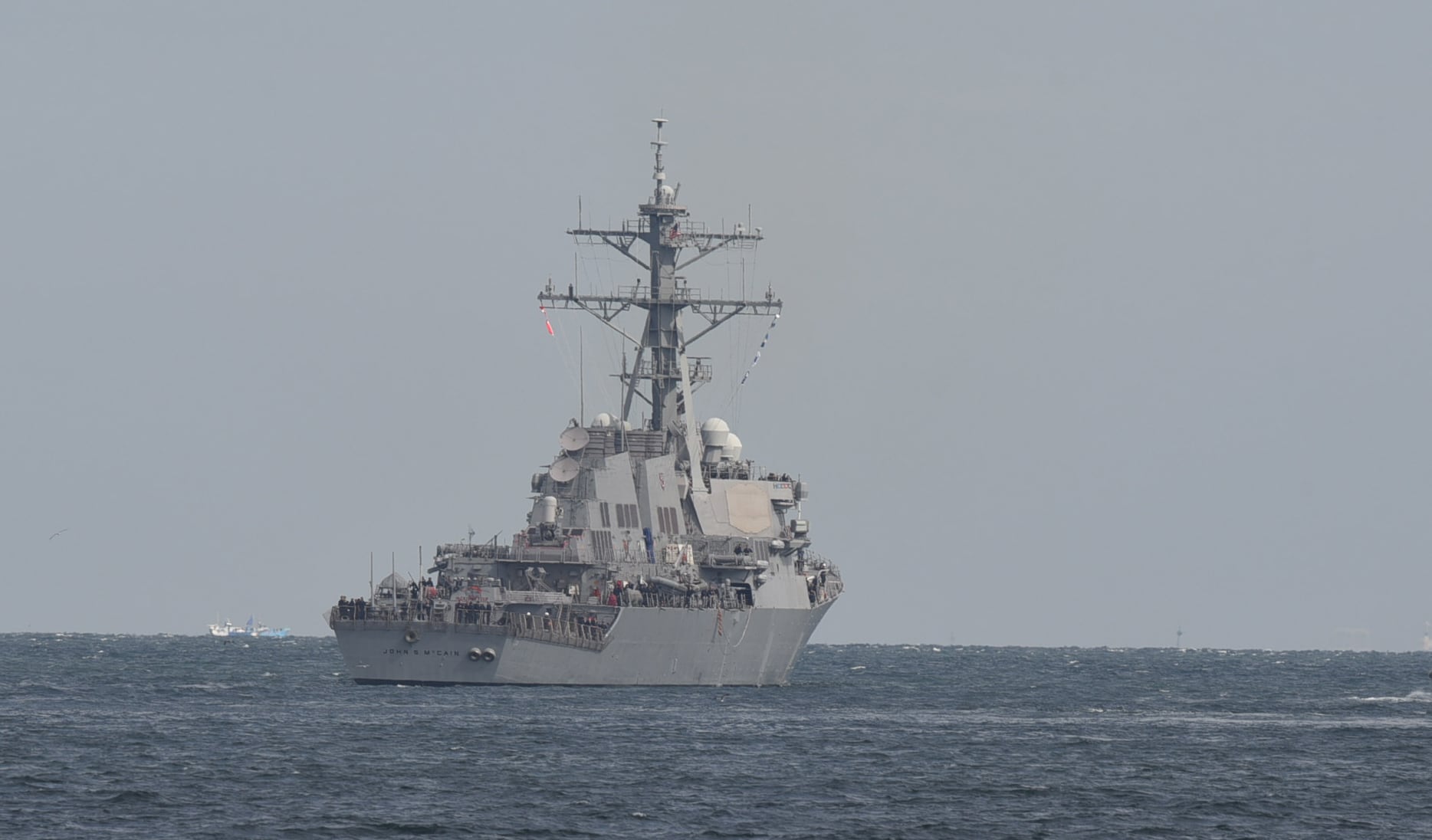The guided-missile destroyer John S. McCain is back underway, more than two years after it suffered a collision that killed 10 shipmates.
The warship is conducting comprehensive at-sea testing out of its Japan home port, the Navy announced this week.
The ship collided with a civilian tanker near Singapore on Aug. 21, 2017, crushing and flooding living quarters below the waterline.
McCain’s crew completed their in-port training phase will spend several months at sea to certify that the ship can return to operations, according to the Navy announcement.
Navigation, damage control, communications, combat systems and other parts of the ship will be tested during this time.
RELATED

While undergoing repairs in Yokosuka, Japan, these past two years, the McCain’s computer network, antenna systems, radar and berthing were all upgraded as well.
Mending the McCain had been expected to be relatively straightforward compared to the repairs needed to fix sister destroyer Fitzgerald, which suffered its own fatal west Pacific collision in June 2017.
But workers discovered earlier this year that McCain’s port shaft — which runs through the hull and turns one of the vessel’s twin screws — was out of alignment, Defense News reported in July.

In addition to taking two warships out the mix, the McCain and Fitzgerald collisions revealed multiple problems plaguing surface fleet operations in the Japan-based U.S. 7th Fleet.
A U.S. National Transportation and Safety Board report released in August chastised the Navy for overworking a poorly trained and exhausted McCain crew.
“The Navy failed to provide effective oversight of the John S. McCain in the areas of bridge operating procedures, crew training and fatigue mitigation,” the U.S. National Transportation and Safety Board report on the McCain collision found.
“The probable cause of the collision between the destroyer John S. McCain and the tanker Alnic MC was a lack of effective operational oversight of the destroyer by the U.S. Navy, which resulted in insufficient training and inadequate bridge operating procedures,” the report states.
The NTSB report stood in stark contrast to the Navy’s accounting of events, which largely focused on a cascade of error’s by the ship’s crew.
A Navy reform council has already implemented more than 100 recommendations for change, including some which go beyond what NTSB prescribed, officials said in August.

Geoff is the managing editor of Military Times, but he still loves writing stories. He covered Iraq and Afghanistan extensively and was a reporter at the Chicago Tribune. He welcomes any and all kinds of tips at geoffz@militarytimes.com.





